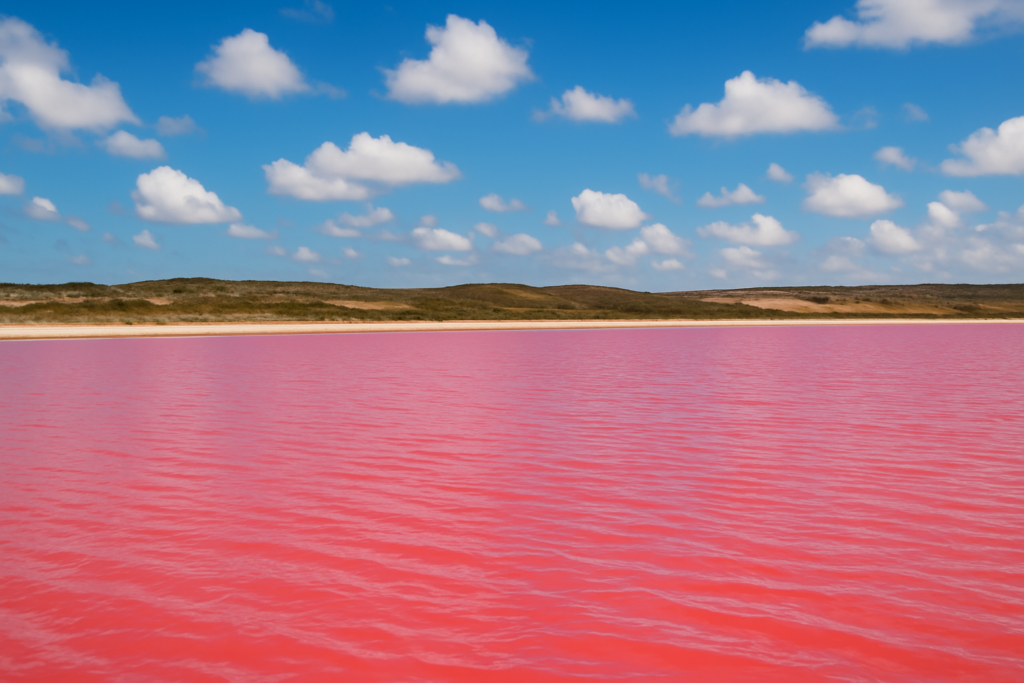
Explore the scientific reasons behind nature’s vivid pink lakes — and where you can find them around the world.
Some lakes on Earth look like they belong on another planet. Their waters shimmer in brilliant shades of pink, drawing curious travelers and scientists alike. But what causes this unusual color?
Pink lakes get their color primarily from **microorganisms** — especially certain species of halophilic (salt-loving) algae and bacteria. These microbes thrive in salty environments and produce reddish pigments like beta-carotene to protect themselves from intense sunlight.
When conditions are just right — high salt levels, plenty of sunlight, and warm temperatures — the populations of these organisms explode, and the water takes on a striking pink or red hue. Some lakes may appear more pastel, while others can look like liquid bubblegum.
Famous pink lakes include Lake Hillier in Australia, Las Coloradas in Mexico, and Lake Retba in Senegal. These lakes are safe to visit and often stunning from above — but many are protected to prevent ecological disruption.
Interestingly, the color doesn’t always stay year-round. Shifts in weather, rainfall, or salinity can cause pink lakes to fade or even return to normal shades. It’s a rare natural phenomenon that reminds us how biology and chemistry can paint Earth in unexpected ways.